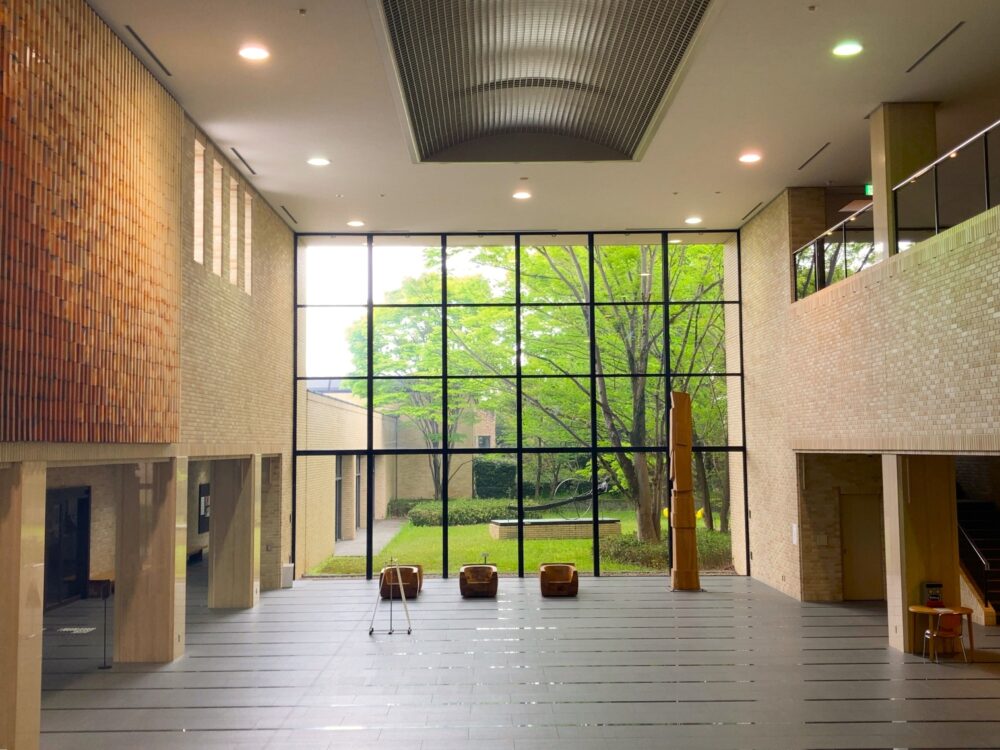
Enjoy Spanish art in Mie Prefecture!?
Located in Tsu City, the Mie Prefectural Art Museum offers a calm and elegant atmosphere where visitors can enjoy a wide range of modern and contemporary artworks from Japan and around the world.
But did you know that this museum also has a special focus on Spanish art?
The connection began in 1992, when Mie Prefecture and the Valencian Community in Spain established a friendship agreement. Since then, Spanish art has become an important part of the museum’s collection policy, and works by leading Spanish painters have gradually been added to the collection.
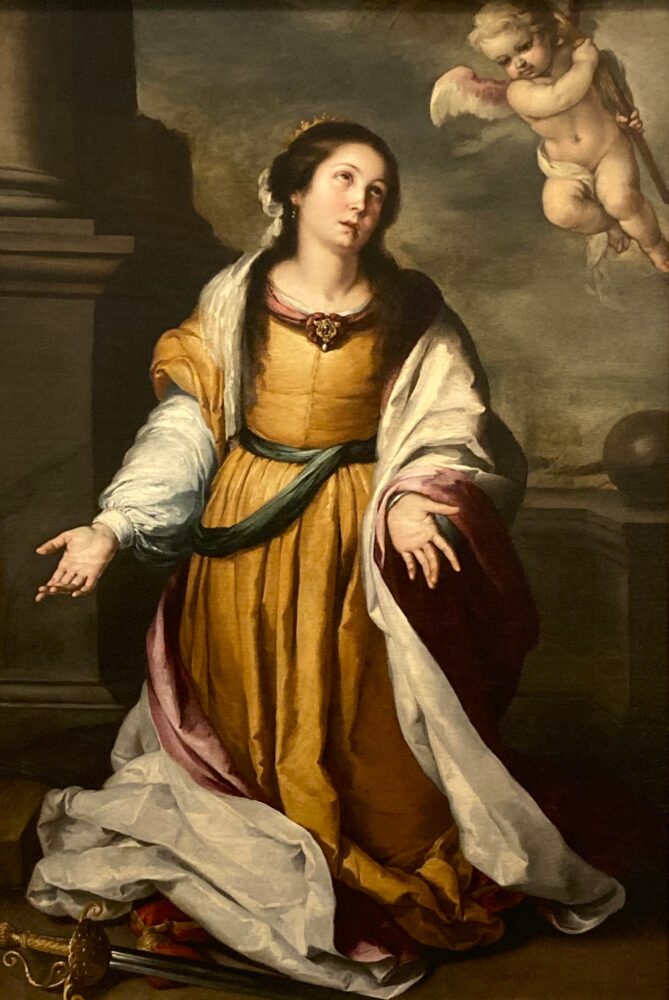
Among the highlights are Bartolomé Esteban Murillo’s “Saint Catherine of Alexandria” and Salvador Dalí’s “Palladian Corridor of Columns”, two of the museum’s signature pieces. Visitors can experience both the serene spirituality of religious painting and the mysterious imagination of surrealism.
The museum also features the Yoshitatsu Yanagihara Memorial Gallery, dedicated to the renowned modern sculptor. This special space allows visitors to appreciate his powerful yet delicate sculptures up close.
Yoshitatsu Yanagihara Memorial Gallery
Spanish Art at the Mie Prefectural Art Museum
The year 1992 marked the 10th anniversary of the Mie Prefectural Art Museum — and also the beginning of its Spanish art collection. That year, the museum acquired Murillo’s “Saint Catherine of Alexandria.”
Soon after, more important works were added, including a donation of Picasso’s “Romani Woman” and the purchase of Dalí’s “Palladio’s Corridor of Thalia” to celebrate the museum’s 15th anniversary. These masterpieces became the foundation of the museum’s outstanding Spanish art collection.
Here, we’ll introduce three of the most notable works from this unique Spanish art collection.
Bartolomé Esteban Murillo
“Saint Catherine of Alexandria” (c.1645-1650)

About This Work (Tap or Click to View)
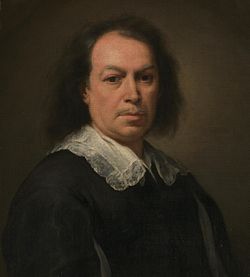
A Master Painter of Spain’s Golden Age
Bartolomé Esteban Murillo was one of the most celebrated artists of Spain’s Golden Age, alongside El Greco, Velázquez, and Zurbarán.
During the 17th century, Spain was deeply influenced by the Counter-Reformation, and religious paintings played a central role in the arts. The dominant style of the time was chiaroscuro, a dramatic contrast of light and shadow. Within this tradition, Murillo created many works depicting the Virgin Mary and Christian saints.
His “Saint Catherine of Alexandria” was painted in his early thirties and is considered one of his earlier known works.
The composition features the wheel and the sword, symbols of Saint Catherine’s martyrdom, and reflects Murillo’s strong grasp of religious iconography.
In addition to the powerful contrast of light and shadow, the soft skin tones and natural folds of the fabric already show the tenderness and maturity that would define his later style.
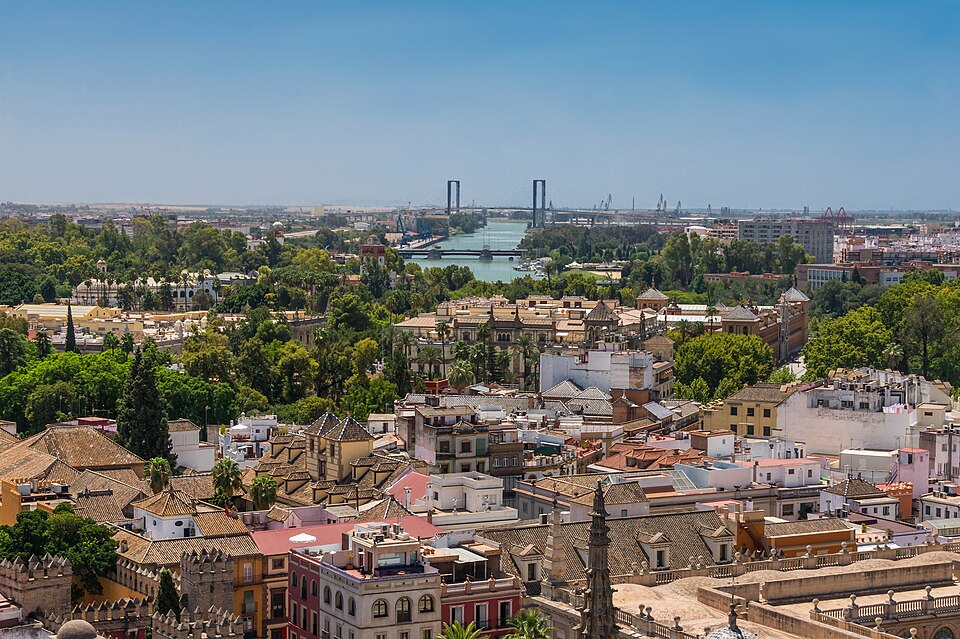
img: by Jebulon
The Artist’s Eye Shaped by Seville
Murillo spent nearly his entire life in Seville, the city that nurtured his art.
Unlike El Greco, who worked abroad, or Velázquez, who served as a court painter, Murillo remained rooted in his hometown throughout his career—a rare choice among Spanish artists of his time.
Yet Seville in the 17th century was a vibrant international port, thriving on trade with the Americas. It was a crossroads of cultures and ideas, where influences from Italian and Flemish art flowed in. Even without leaving Spain, Murillo absorbed the latest artistic trends and techniques.
Unlike the royal painters who served the court, Murillo painted for the people of Seville—ordinary townsfolk, merchants, and children. His freedom from courtly restrictions allowed him to develop a gentle and approachable style, often seen in his genre paintings of everyday life.
This “Saint Catherine of Alexandria” captures that same balance of spirituality and humanity.
It is not merely a religious painting, but a work that quietly reflects the spirit of Seville and the cultural richness of its time.
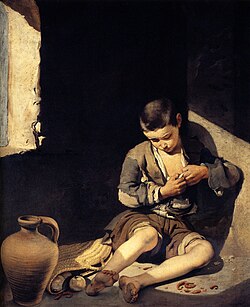
Francisco de Goya
“Brigadier Alberto Foraster” (c.1804)
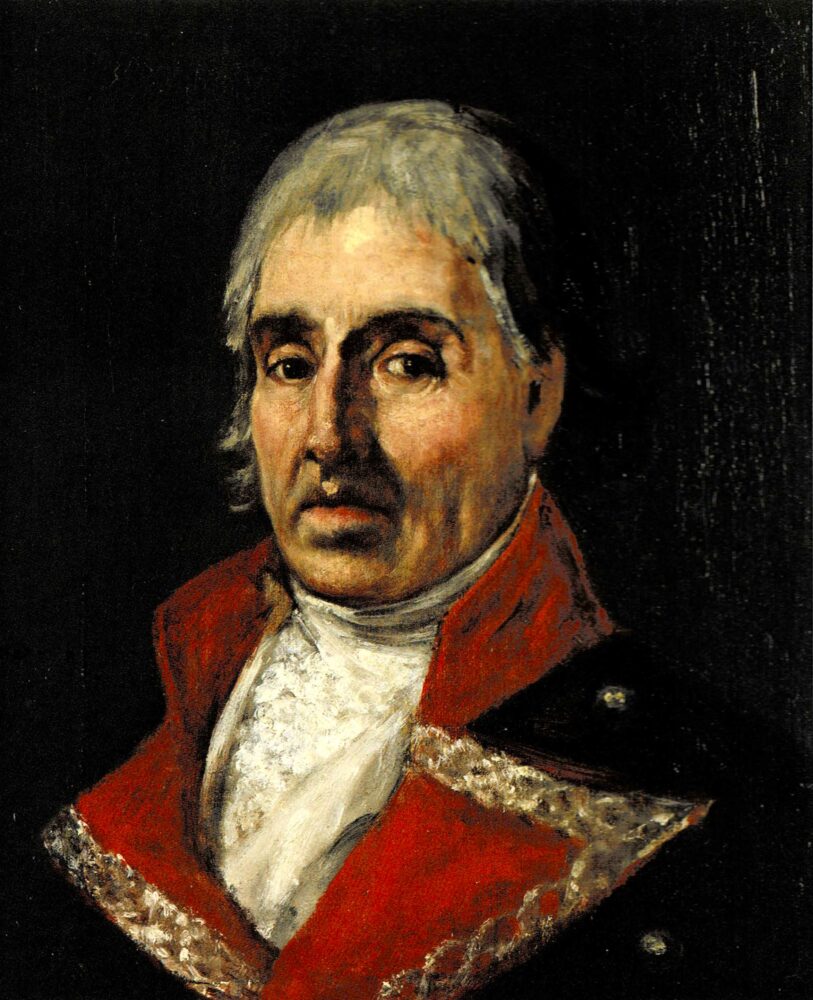
About This Work (Tap or Click to View)
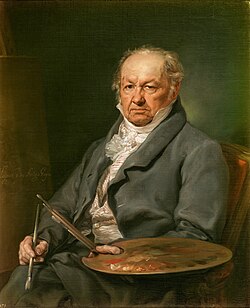
Goya — A Court Painter Who Faced Many Hardships
Francisco de Goya is one of Spain’s greatest painters and a pioneer of modern art.
While he painted the splendor of the royal court, he also looked deeply into the realities and emotions hidden behind that glamour.
Goya became a court painter at the age of 40, after years of steady work creating religious paintings and tapestry designs.
Just as his career began to flourish, he was struck by a severe illness that left him completely deaf.
Yet he never stopped painting.
His most famous masterpieces — such as “The Family of Charles IV” and “The Naked Maja” — were created after he lost his hearing.
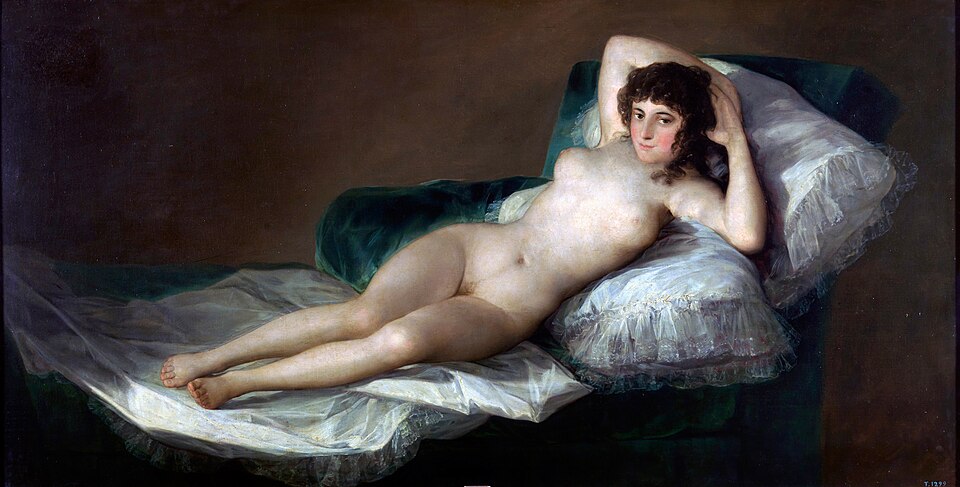
A Portrait from a Turbulent Era
This “Portrait of Brigadier Alberto Foraster” was painted during that difficult period.
Foraster was a Spanish military officer, serving as a royal guardsman and cavalry commander, supporting the monarchy of his time.
Although he is not a well-known historical figure, Goya’s portrait captures him with a subtle melancholy — a weary expression that hints at the heavy times he lived through.
The year 1804 was a moment of great turmoil in Spain, shaken by the French Revolution, the Pyrenean War, and the War of the Oranges.
Amid such instability, Goya’s painting seems to reflect not just the man, but the anxious atmosphere of an entire nation.
What makes Goya’s portraits so powerful is that they go beyond realism.
He didn’t just paint people’s appearance — he revealed their silence, fragility, and inner conflict.
That emotional depth is why Goya’s portraits continue to move viewers, even centuries later.
Francisco de Goya
“The Disasters of War” (c.1810-1820)
About This Work (Tap or Click to View)
Another Record of the Spanish War of Independence
A few years after painting “Brigadier Alberto Foraster”, Goya witnessed one of the darkest chapters in Spanish history.
In 1808, Emperor Napoleon Bonaparte took advantage of political turmoil within the Spanish Bourbon dynasty and placed his brother Joseph Bonaparte on the Spanish throne.
The Spanish people fiercely resisted, and what followed was the long and devastating Spanish War of Independence.
Violence Leads Only to Madness
“The Disasters of War” is a haunting series of etchings created by Goya during this period.
Through these works, he depicted what he saw and heard — scenes of atrocities, suffering, and despair.
Some prints show the French army massacring civilians, while others depict Spanish citizens killing French soldiers.
Rather than taking sides, Goya focused on how war itself corrupts humanity, stripping away reason and compassion.
Goya’s message seems clear:
“No matter the cause or justification, war brings only madness and destruction.”
There are no heroes or victors here — only the silent tragedy of people losing their humanity.
Each print records that descent with chilling precision and honesty.
Published After His Death
Goya never saw “The Disasters of War” published in his lifetime.
It was finally released 35 years after his death, in 1865.
The delay was no accident — the series criticized not only the French occupation but also the Spanish Bourbon monarchy that Goya had once served as a court painter. Publishing it while he was alive would have been too dangerous.
It’s also important to remember that Goya created these images before photography existed as a means of reporting war.
His incredible draftsmanship turned what might have been art into something closer to documentary evidence and protest.
For that reason, “The Disasters of War” can be seen as one of the earliest examples of visual journalism — a timeless record of the human cost of violence.
In addition to the Spanish masterpieces, the museum also houses remarkable works such as Pablo Picasso’s “Romani Woman” and Salvador Dalí’s “Palladio’s Corridor of Thalia”.
Unfortunately, due to copyright restrictions, these artworks cannot be shown here — but they are absolutely worth seeing in person.
Other Must-See Works at the Mie Prefectural Art Museum
Claude Monet
“The Port of Argenteuil Seen from the Road Bridge” (1874)
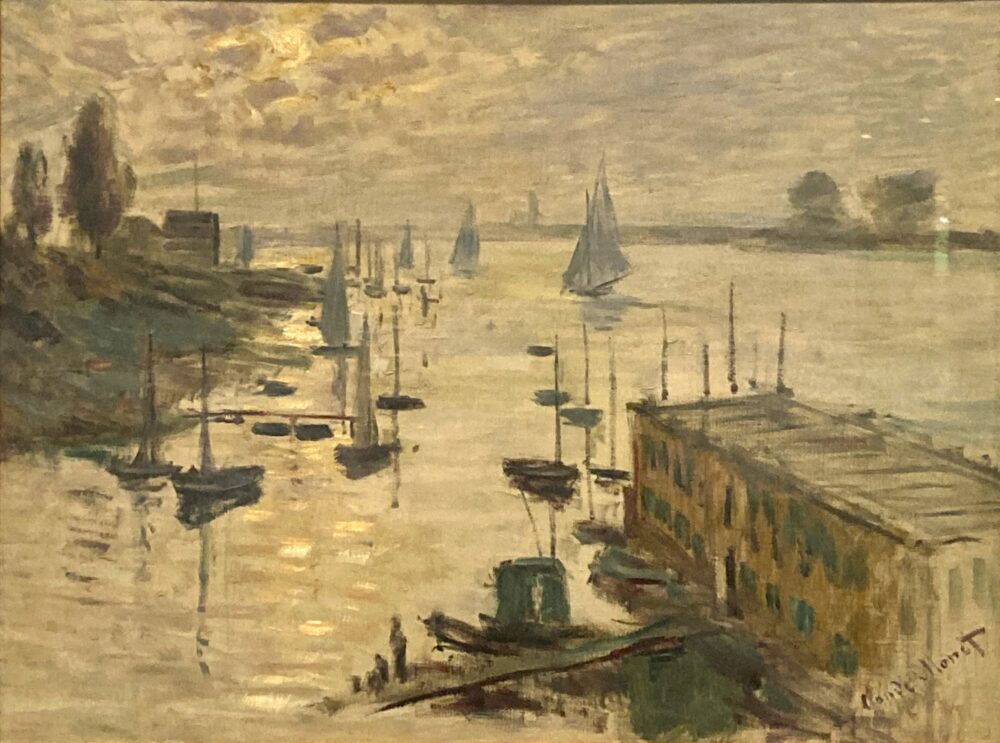
About This Work (Tap or Click to View)
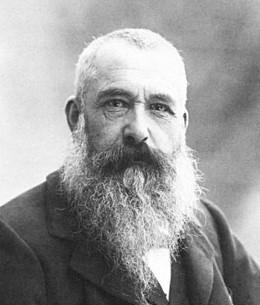
This painting captures Argenteuil, a town northwest of Paris where Monet lived and worked from 1871 to 1878.
It was during this period that he painted his world-famous “Impression, Sunrise” — the work that gave Impressionism its name.
In many ways, Argenteuil was the birthplace of Monet’s distinctive artistic style.
In “The Port of Argenteuil Seen from the Road Bridge”, Monet painted the Seine River as seen from the Argenteuil Bridge, looking northwest toward the moored boats.
Sunlight breaks through the clouds, reflecting off the water’s surface in a beautifully atmospheric way.
Yet Monet wasn’t trying to paint an “ideal” landscape — his goal was to capture the light exactly as he saw it.
That’s why the scene feels so real and immersive, as if you’re standing on the bridge with him, watching the same glowing river.
Interestingly, the Argenteuil Bridge had been destroyed during the Franco-Prussian War in 1870 and rebuilt in 1874, the same year this painting was created.
Perhaps Monet saw in that new bridge a symbol of renewal — a new light for a new era.
Norio Ogawa
“Fishing Village in Summer” (1914)
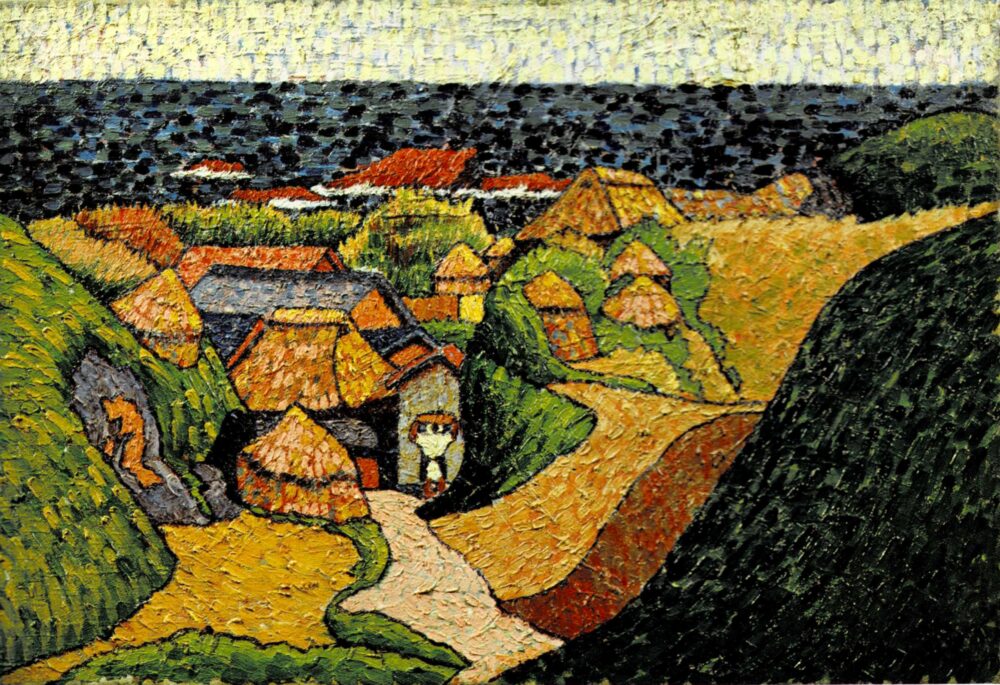
About This Work (Tap or Click to View)
The Mie Prefectural Art Museum houses many works by artists from the local area.
One of them is “Fishing Village in Summer”, painted by Norio Ogawa (1894–1944), who was born in Matsusaka City, Mie Prefecture.
The museum owns several of Ogawa’s works, but this is his only completed oil painting on canvas. Little is known about his life and artistic career.
However, when you look closely at Fishing Village in Summer, you can clearly see the influence of Post-Impressionism, especially the swirling brushstrokes inspired by Vincent van Gogh. The way he divides the color areas also reflects the influence of Japanese ukiyo-e prints.
Although Ogawa remains a mysterious figure, this vibrant painting of a sunlit fishing village beautifully captures his unique and expressive world.
Naojiro Harada
“Old Man” (c.1886)
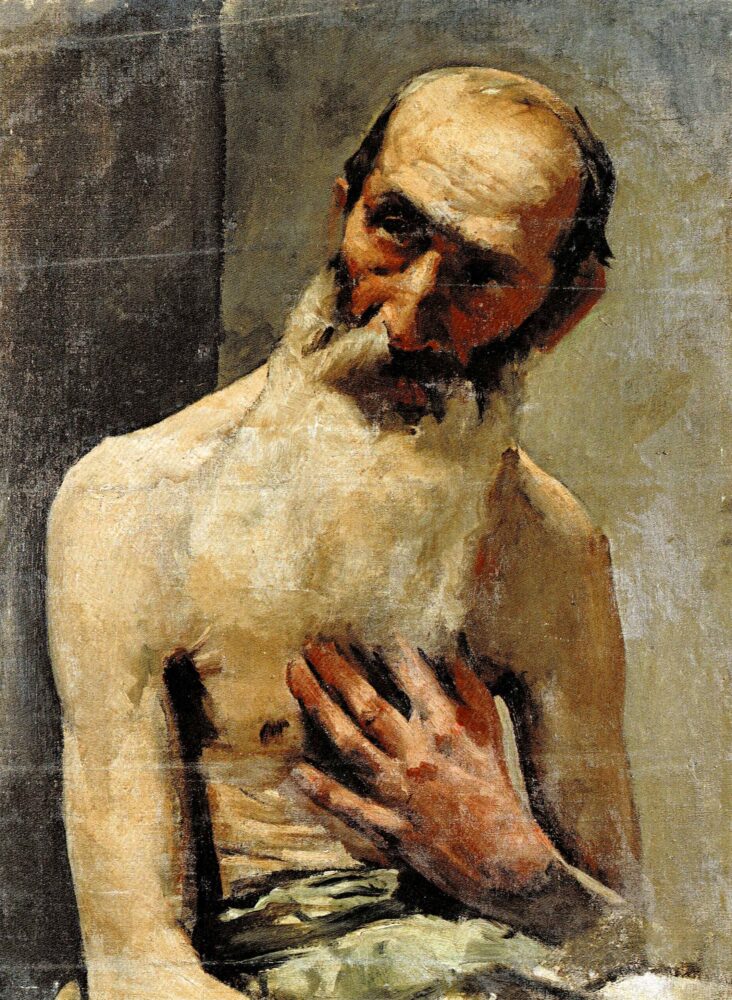
About This Work (Tap or Click to View)
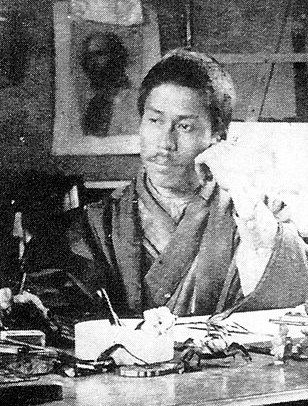
When we think of modern Japanese painting, many people associate it with Kuroda Seiki and the influence of French Impressionism.
But before that, there were artists who studied Western-style painting in Europe. One of them was Naojiro Harada, who went to Germany to study realism and traditional European painting techniques.
His “Old Man”, now in the collection of the Mie Prefectural Art Museum, was painted during his stay in Germany.
The work is known for its dramatic contrasts of light and shadow and its incredibly detailed depiction.
The presence of the elderly model feels almost lifelike, showing Harada’s technical mastery learned abroad.
This painting can be compared to his famous Shoemaker (1886), now held by Tokyo University of the Arts, which also reflects his realistic approach.
After returning to Japan the following year, Harada faced a difficult time.
Western-style painting was often rejected due to the rise of nationalism, but he continued to promote Western art in Japan.
Sadly, he died young at the age of just 36.
Though his life was short, Harada’s dedication to realism left a lasting mark on Japanese art.
His sincere gaze and quiet strength still live on in Old Man today.
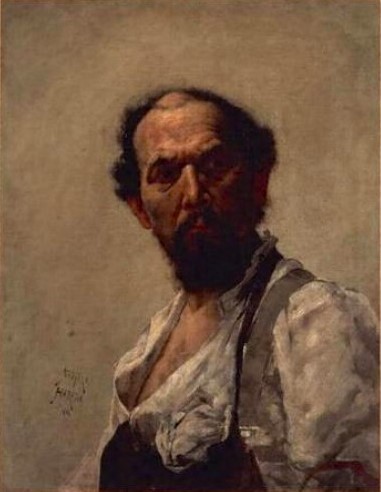
Collection of Tokyo University of the Arts
Torajiro Kojima
“Belgian Girl Dressed in a Kimono” (1911)
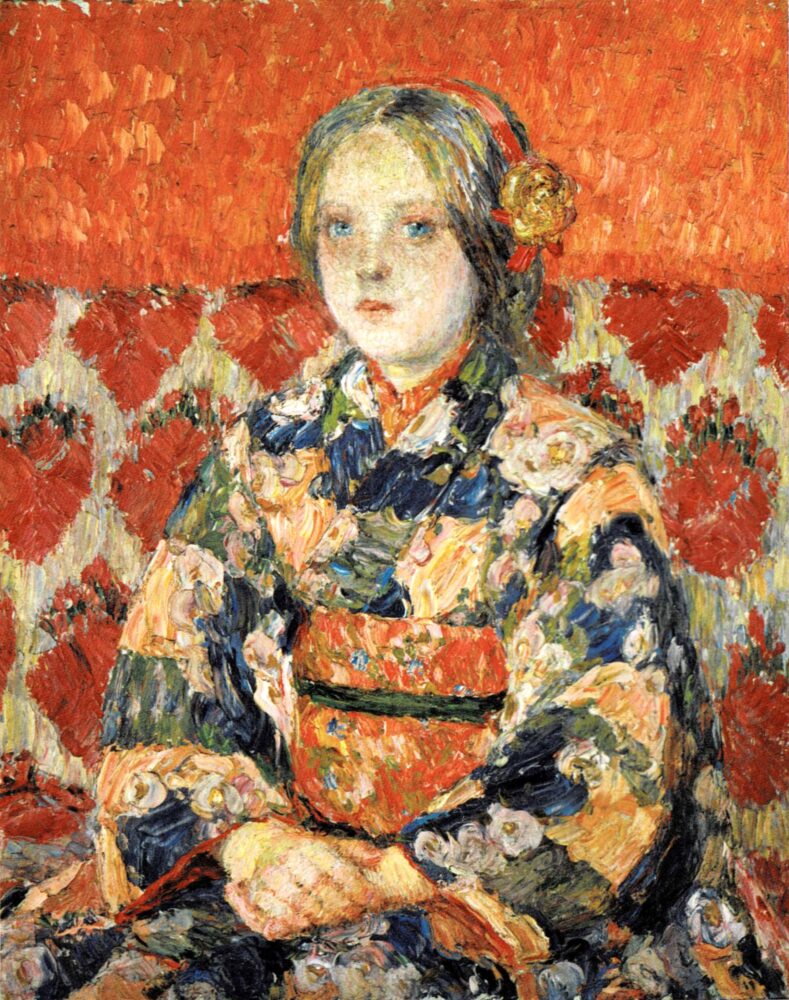
About This Work (Tap or Click to View)
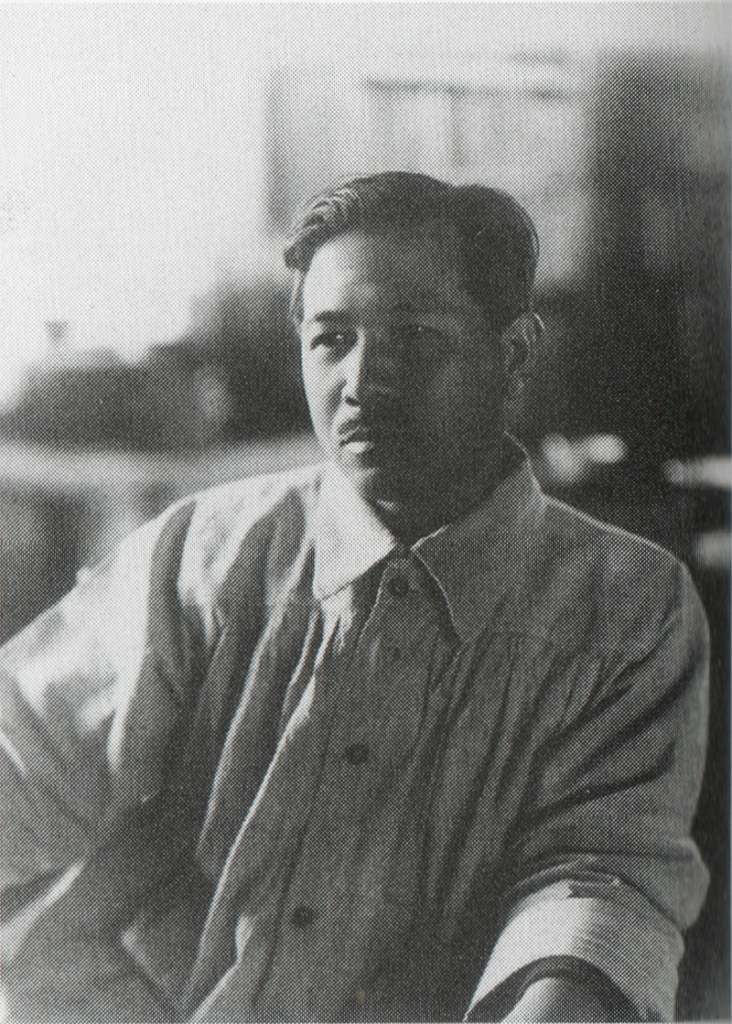
Torajiro Kojima (1881–1929) was a painter from Okayama, Japan.
He is best known as the man who helped build the collection of the Ohara Museum of Art in Kurashiki—but above all, he was an outstanding artist in his own right.
His painting “Belgian Girl Dressed in a Kimono”, now in the collection of the Mie Prefectural Art Museum, was created during his study in Belgium.
Kojima’s rough yet expressive brushwork gives life to the girl’s delicate features.
The vivid red background contrasts beautifully with her soft skin tones, creating a strong visual impact.
What captures viewers most is the girl’s innocent expression.
You can sense Kojima’s gentle observation and his careful attention to her natural charm, expressed through vibrant color and texture.
Interestingly, Kojima painted several versions of this subject—young Belgian girls wearing Japanese kimono.
Other examples can be seen at the Ohara Museum of Art and the Nariwa Museum, Okayama.
If you want to explore more of Kojima’s world, visiting these museums in Okayama is highly recommended.
▶Read about the Ohara Museum of Art here
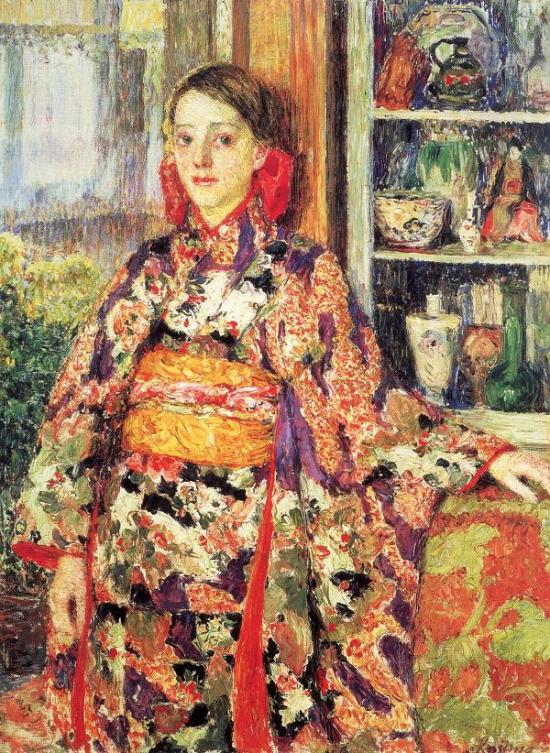
▶Read about the Nariwa Museum here
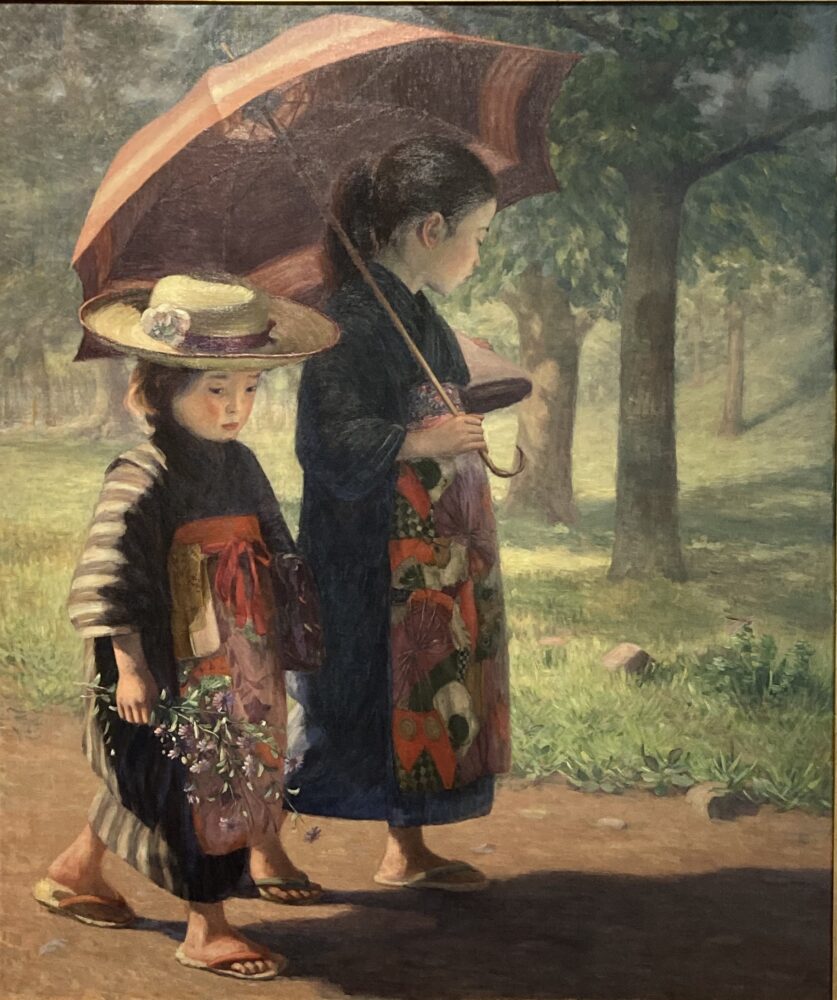
Mie Prefectural Art Museum: Where Japanese Modern Art Meets Spanish Masterpieces
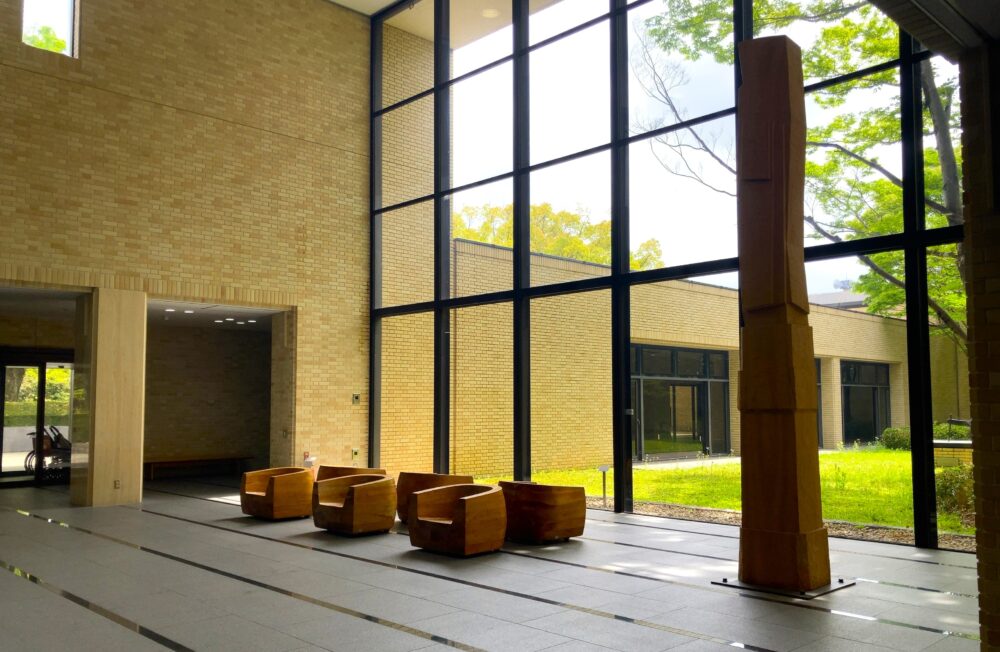
Located in Tsu City, Mie Prefecture, the Mie Prefectural Art Museum showcases not only modern and contemporary Japanese art but also a remarkable collection of Spanish paintings.
Despite its impressive lineup, the museum has a calm and welcoming atmosphere—perfect for taking your time with each artwork.
In 1992, when Mie Prefecture established a friendship agreement with Valencia, Spain, the museum began collecting works by Spanish masters such as Bartolomé Esteban Murillo and Francisco de Goya.
Among them, Goya’s Portrait of Brigadier Alberto Foraster and The Disasters of War, as well as Murillo’s Saint Catherine of Alexandria, offer visitors a glimpse into Spain’s rich history and social climate through art.
But Spanish art isn’t the museum’s only focus.
It also highlights local artists like Norio Ogawa, as well as important Japanese modern painters such as Torajiro Kojima and Naojiro Harada.
This broad and balanced perspective is one of the museum’s key strengths.
Unlike trendy urban museums, the Mie Prefectural Art Museum offers a quiet and reflective experience—an ideal place to truly connect with the power of painting.
Take a moment to stand before a single canvas, breathe, and simply enjoy the beauty in front of you.
It’s a small yet luxurious moment that art lovers shouldn’t miss.
Mie Prefectural Art Museum – Visitor Information
Location: 11 Otani-cho, Tsu City, Mie Prefecture









Comments